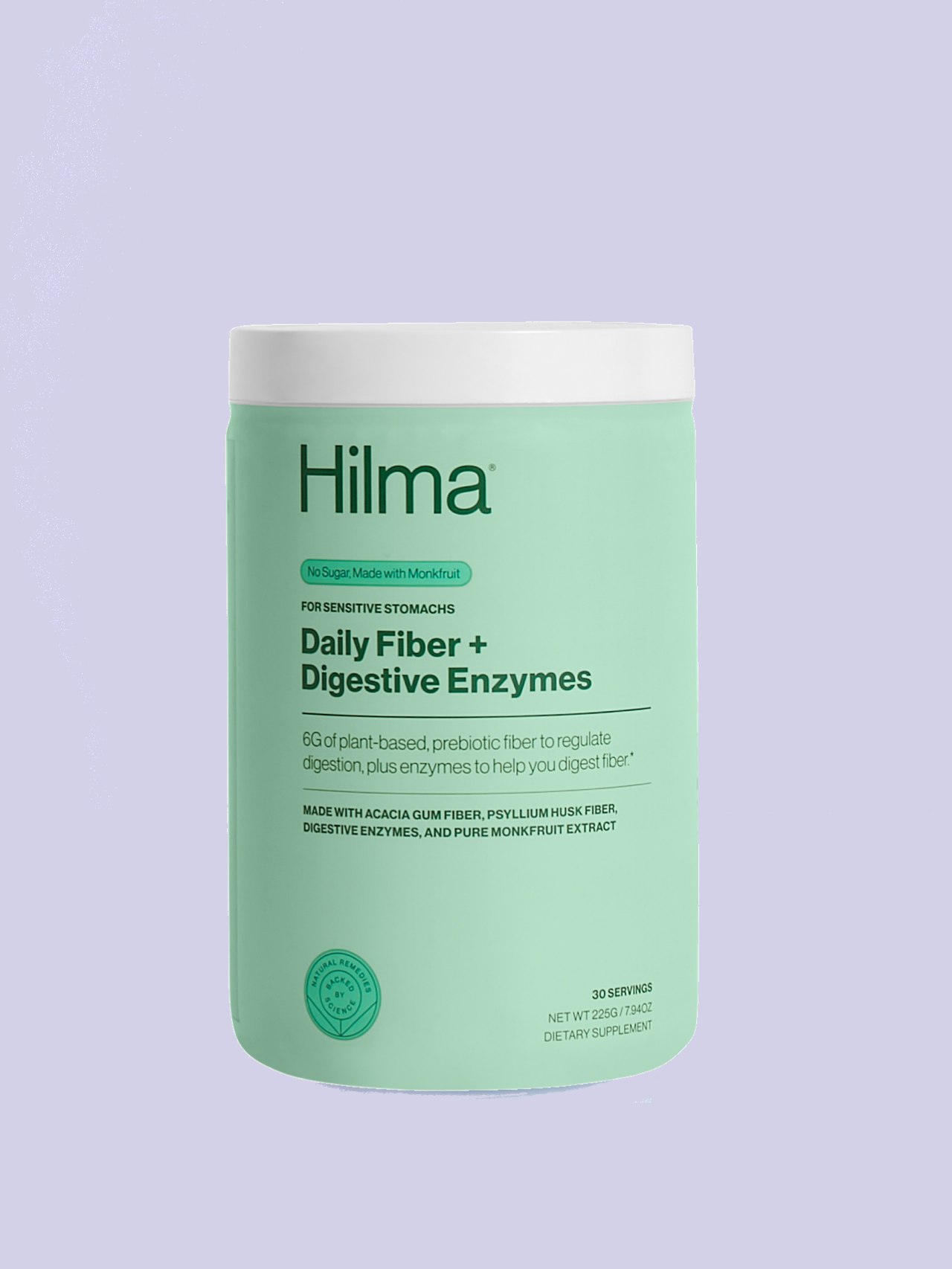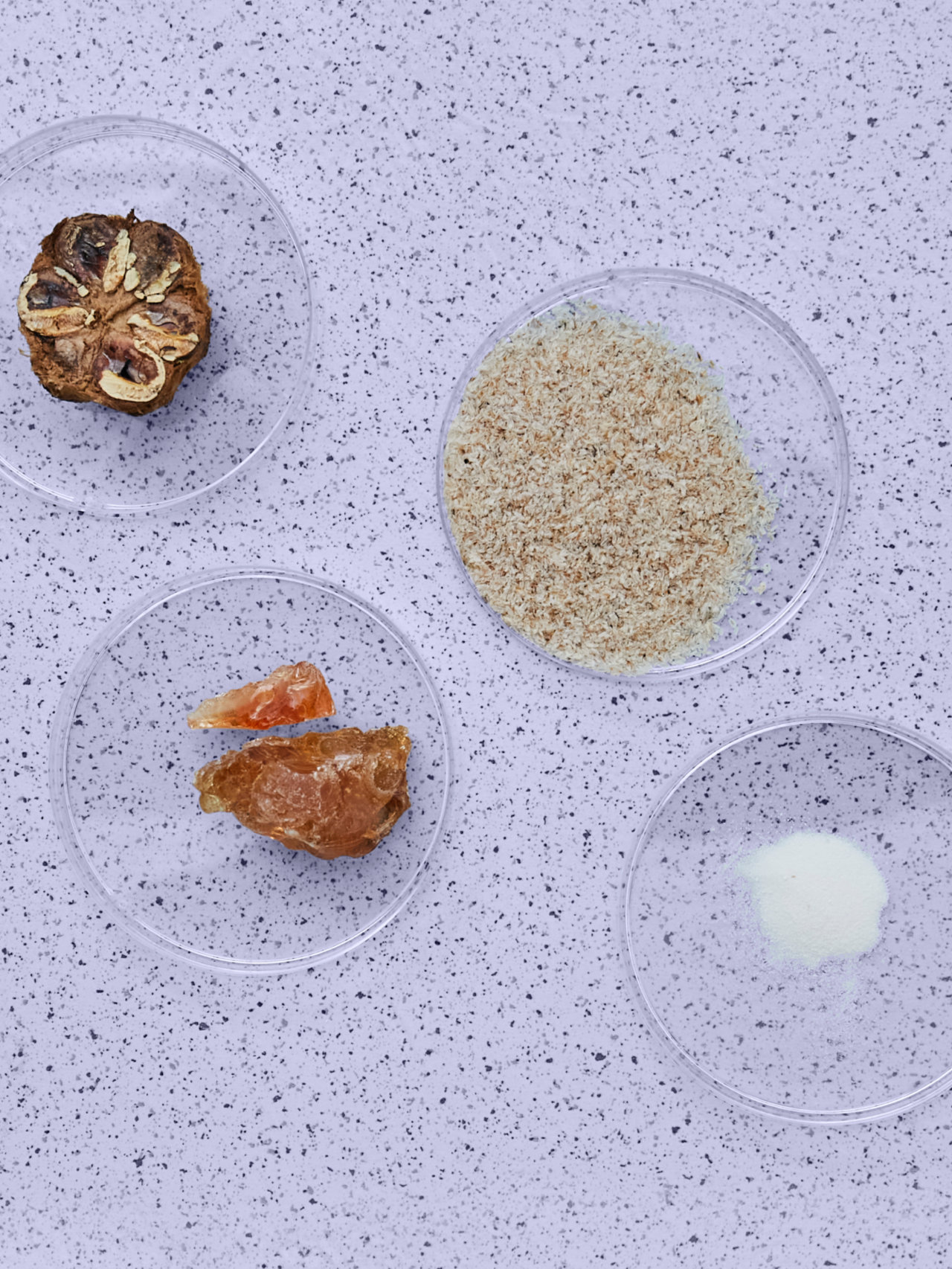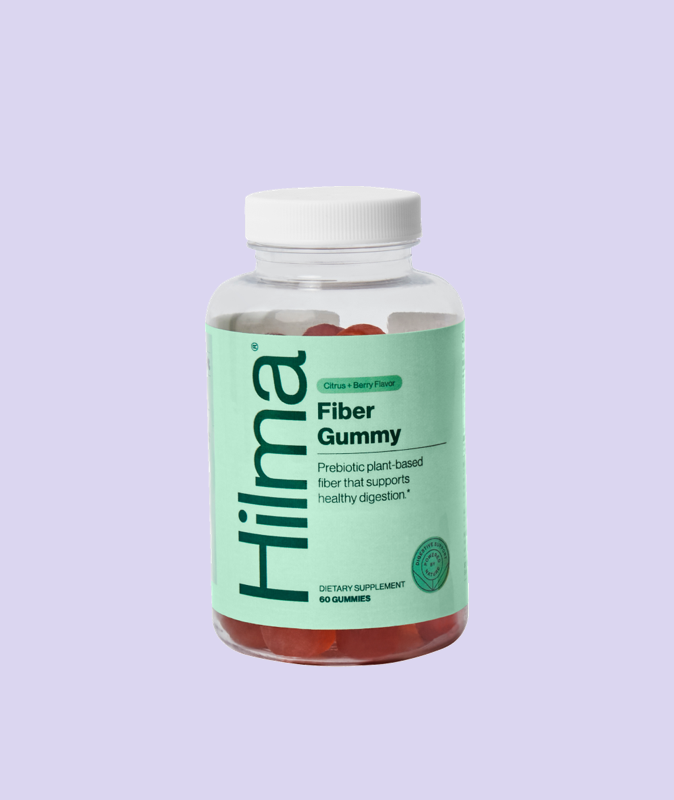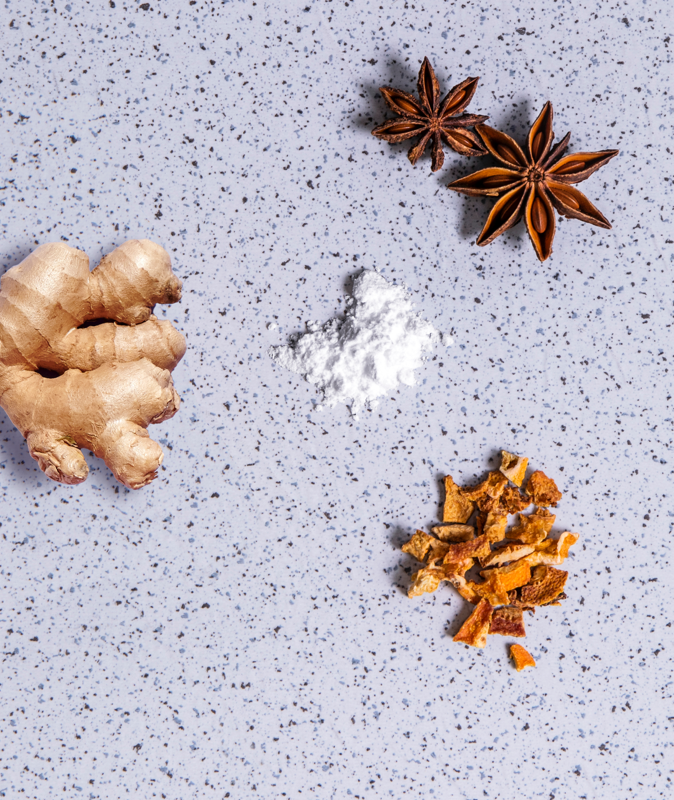
Ever wondered what really goes on when you hear health experts emphasizing the importance of fiber? At Hilma, we’re committed to unraveling the essentials of a healthy diet, and a key piece of that puzzle is understanding the roles of soluble and insoluble fiber.
Both types are vital for our well-being but function in uniquely beneficial ways. In this article, we're diving into the world of fiber to uncover the differences between these different types of fiber, exploring where each type is found, how they work in the body, and the amazing health benefits they offer.
So, if you’re ready to see how soluble and insoluble fiber can transform your health, keep reading for a deep dive into the fibrous realm of digestive wellness.
What Is Soluble Fiber and What Are its Benefits?
Soluble fiber is a type of dietary fiber that dissolves in water to form a gel-like substance in your intestine. This transformation plays a pivotal role in how your body manages nutrients and waste.
Here are the key benefits of incorporating soluble fiber into your healthy diet:
- Maintains Healthy Blood Sugar Levels: Soluble fiber helps slow down carbohydrate absorption, supporting healthy glucose levels and preventing sudden spikes.
- Supports Heart Health: By binding with fatty acids, this fiber helps support healthy cholesterol levels.
- Promotes Weight Management: The gel-like substance supports satiety, helping you feel full longer, which can curb overeating and support weight management.
- Supports Gut Health: As a prebiotic, soluble fiber feeds the beneficial gut bacteria, maintaining your gastrointestinal health and soothing bloating.
- Helps Control Blood Pressure: Its role in managing cholesterol also assists in maintaining healthy blood pressure levels.
- Fortifies Skin Health: A healthy gut can reflect on your skin, with better digestion contributing to clearer, healthier-looking skin.
From legumes and oat bran to citrus fruits and avocados, soluble fiber is found in a variety of delicious and nutritious foods that are easy to incorporate into any meal. Making these fiber-rich foods a regular part of your diet can significantly support your overall health.
What Is Insoluble Fiber and What Are the Benefits?
While soluble fiber gets a lot of attention for its gel-forming abilities, insoluble fiber is equally essential, acting as nature's broom to keep your digestive tract running smoothly. This type of fiber does not dissolve in water; instead, it remains intact as it moves through your digestive system, helping to bulk up your stool and support regular bowel movements.
Here are the key benefits of integrating insoluble fiber into your diet:
- Supports Regular Bowel Movements: Insoluble fiber adds bulk to stool, which helps it pass through the intestines, reducing the risk of constipation.
- Aids in Weight Management: By adding bulk without extra calories, insoluble fiber helps you feel full longer, which can support healthy eating and efforts toward weight loss.
- Supports Gut Health: A well-functioning digestive system supported by regular consumption of insoluble fiber can support overall gut health and stability.
- Helps Manage Blood Sugar Levels: Although it doesn’t dissolve to form a gel, insoluble fiber can still aid in slowing the absorption of sugar, helping to manage blood sugar levels.
- Maintains Heart Health: Regular intake of fiber-rich foods, including those high in insoluble fiber, actively supports cardiovascular health.
Sources of insoluble fiber are abundant and include whole grains like whole wheat, wheat bran, and brown rice, as well as vegetables such as green beans and legumes. Incorporating a variety of these fiber-rich foods into your diet not only helps manage digestive health but also contributes to a broader range of health benefits, from metabolic improvements to supported heart health.
How Do Soluble and Insoluble Fiber Differ?
Think of soluble and insoluble fiber like two teammates who play different positions in the same game: keeping you healthy.
Soluble fiber loves water; it dissolves in it and creates a gel-like substance that cozies up to your digestive juices, slowing things down a bit. This helps manage your blood sugar and supports healthy cholesterol levels.
Insoluble fiber, on the other hand, doesn't dissolve. It stays tough, bulks up your stool, and keeps things moving through your digestive system, helping you stay regular and reducing the risk of constipation.
Both types are important for health, but they tackle different problems in your gut. By understanding their roles, you can better manage your diet and ensure your digestive tract runs like a well-oiled machine.
What Is the Recommended Daily Intake of Both Types of Fiber?
Navigating the fiber landscape can be simpler than you think. Regarding the amount of fiber you should eat each day, adults should aim for about 25 to 38 grams of fiber, depending on their gender and age.
But there’s no need to split hairs over exactly how much of each type to consume. A good rule of thumb to see if you’re eating enough fiber is whether you have a varied diet — rich in fruits, vegetables, legumes, and whole grains. This natural mix will typically provide a healthy balance of both soluble and insoluble fibers.
Are There Any Risks or Side Effects of Consuming Too Much Fiber?
Boosting your fiber intake is generally a win for your health, but it's possible to have too much of a good thing.
Here’s what to watch out for if you get overly enthusiastic with fiber:
- Digestive Discomfort: Jumping too quickly into a high-fiber diet can lead to bloating, gas, and even constipation. Your body needs time to adjust to more fiber, especially if it's a drastic change.
- Nutrient Absorption: Extremely high fiber intake can interfere with the absorption of some nutrients, such as iron, zinc, and calcium, because fiber can bind to these minerals and make them less available to your body.
- Hydration Needs: With more fiber, you need more water. Not drinking enough can lead to hard, dry stools and constipation, which is the opposite of what you want.
To avoid these pitfalls, increase your fiber intake gradually and keep your hydration levels up. As always, if you have concerns about your fiber intake or experience persistent issues, it might be time to chat with a healthcare professional or dietitian to fine-tune your dietary fiber balance.
How Can Hilma Provide You With More Fiber?
At Hilma, we understand the importance of getting both soluble and insoluble fiber for a well-balanced diet and optimal health. That's why we offer targeted solutions to help you seamlessly boost your daily fiber intake.
Our Daily Fiber + Digestive Enzymes blend is perfect for those looking to support their digestive wellness without the bloating often associated with high-fiber diets. It combines the smoothness of soluble fibers with the efficiency of digestive enzymes, ensuring your stomach handles it gently.
For a tastier approach, our Fiber Gummy makes getting your daily fiber dose not only effortless but also enjoyable. Packed with plant-based, prebiotic fiber, these gummies support bowel regularity and digestion, all while fitting easily into your daily routine.
Whether you prefer a quick gummy treat or a comprehensive fiber supplement, Hilma has you covered, helping you meet your fiber needs deliciously and effectively.
Balancing Your Fiber Intake: The Final Word
Navigating the world of dietary fiber intake doesn't have to be complicated. Understanding the roles and benefits of both soluble and insoluble fiber can help you make informed decisions about your diet and health.
At Hilma, we're dedicated to supporting your fiber intake with scientifically formulated products that fit right into your daily life. By providing options like our Fiber Gummy and Daily Fiber + Digestive Enzymes, we make it easier for you to maintain a balanced, fiber-rich diet that supports your overall health and digestive wellness.
Explore our products today and take a step toward a balanced, healthier gut. With Hilma, it’s all about finding the perfect blend of nature and science to boost your health naturally and effectively.
Sources:
Soluble vs. insoluble fiber | MedlinePlus Medical Encyclopedia
Soluble vs. insoluble fiber Information | Mount Sinai
Fiber | The Nutrition Source | Harvard T.H. Chan School of Public Health
High-fiber foods | Mayo Clinic





